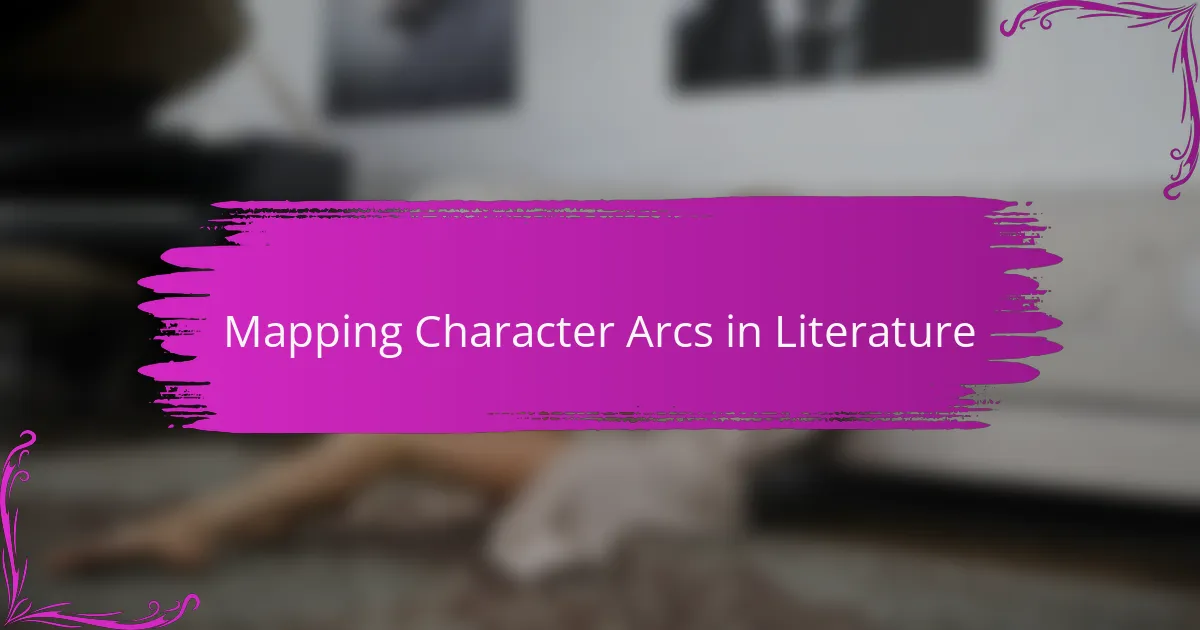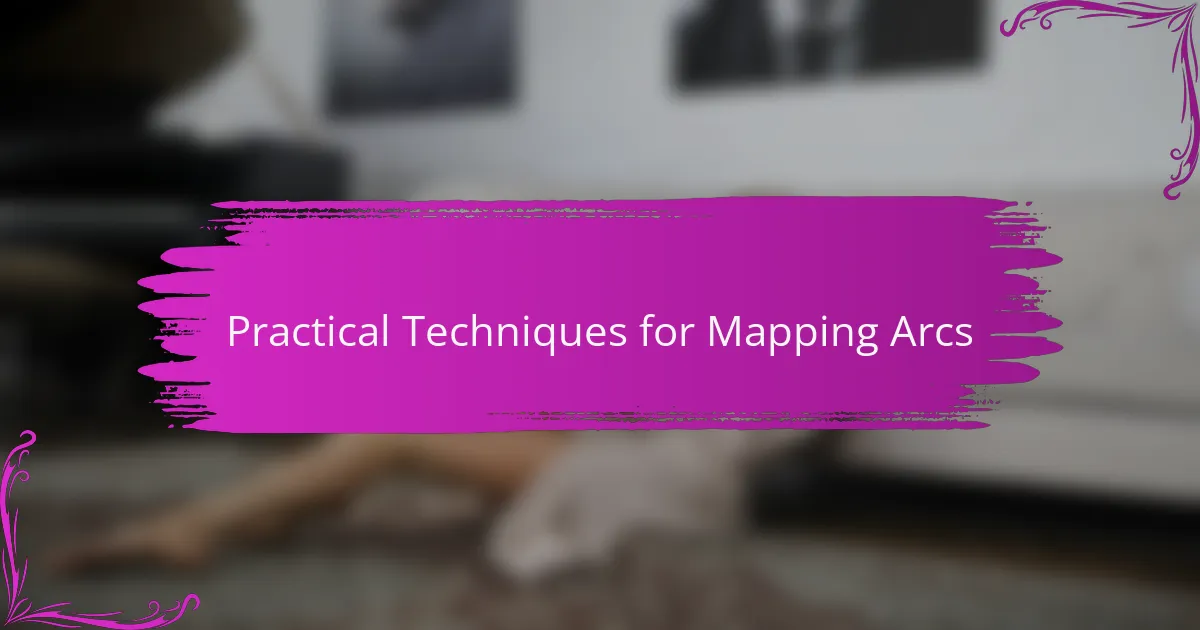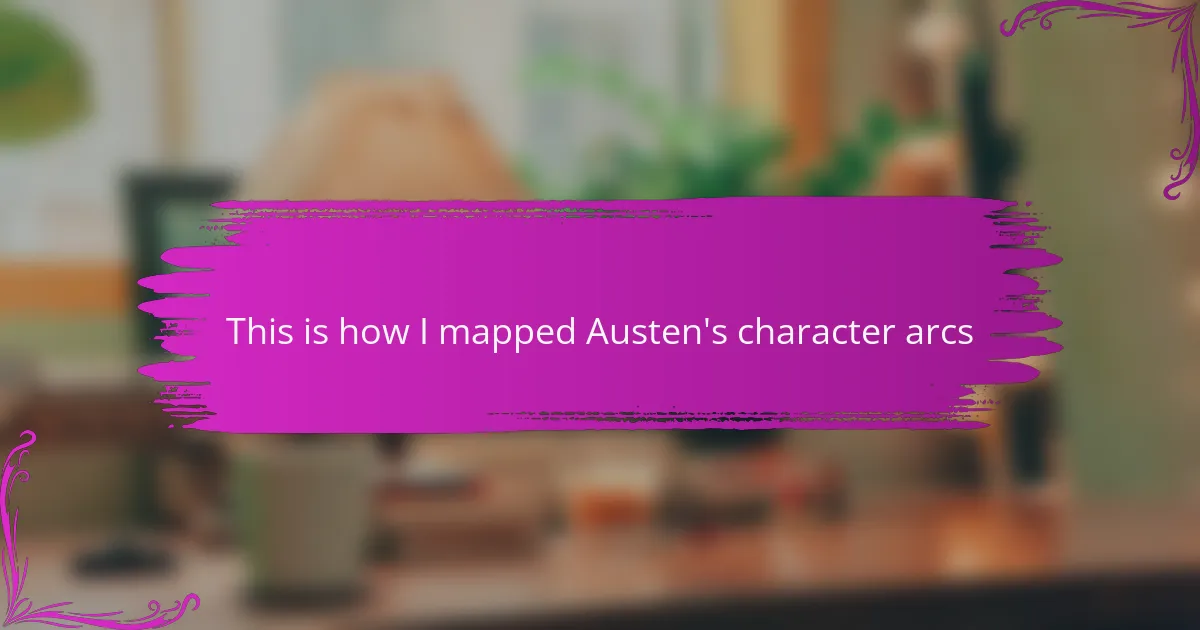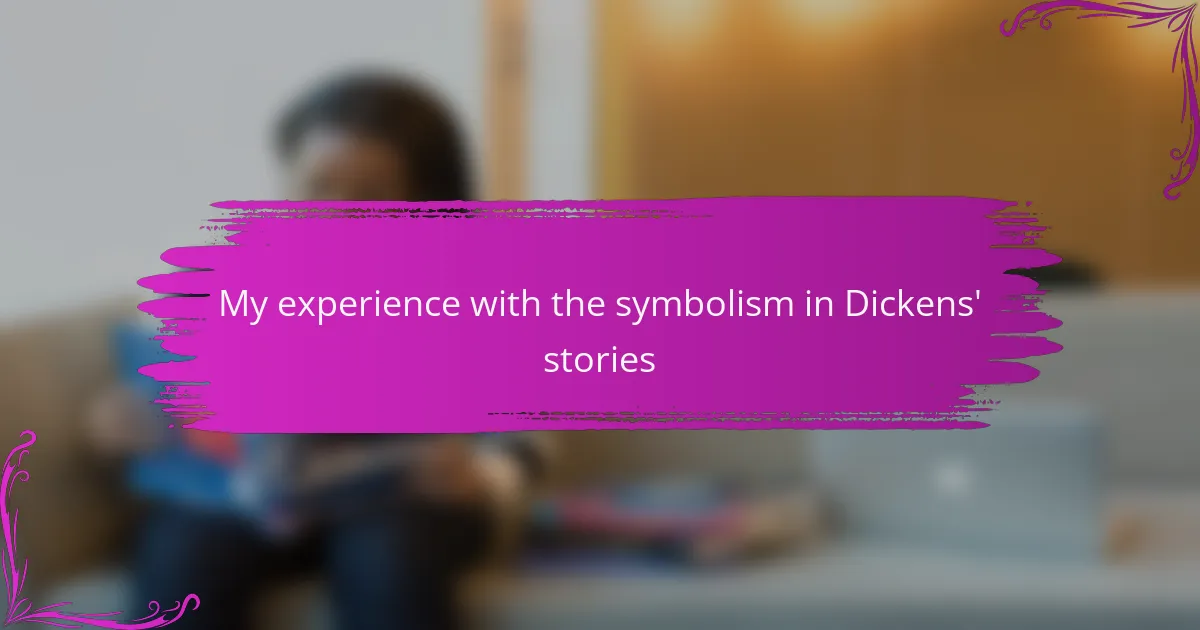Key takeaways
- Character arcs are vital for illustrating personal growth, often shaped by experiences and relationships, as seen in Jane Austen’s characters like Elizabeth Bennet and Mr. Darcy.
- Mapping character arcs enhances understanding of literature by revealing emotional depth and connections, allowing readers to reflect on their own experiences.
- Practical techniques such as character journals, timelines, and discussions can deepen insights into character motivations and transformations.
- Creating personalized character arc maps helps visualize growth and prompts introspection, connecting literary journeys to personal life experiences.

Overview of Character Arcs
Character arcs are essential to storytelling, particularly in the works of Jane Austen. They demonstrate how characters change and grow, often influenced by their relationships and experiences. For instance, I vividly recall reading “Pride and Prejudice” and being struck by Elizabeth Bennet’s journey from prejudice to understanding. Her transformation made me reflect on how our own biases can hinder our relationships, which is a theme I find profoundly relatable.
A compelling character arc typically includes various stages such as:
– Introduction: The character’s initial state, showcasing traits and flaws.
– Inciting Incident: An event that challenges the character’s beliefs.
– Development: Key experiences that facilitate change.
– Crisis: A moment testing the character’s resolve and growth.
– Resolution: The character’s new understanding and behavior reflecting growth.
Mapping these arcs gives deeper insight into Austen’s nuanced characters and highlights the emotional connections that resonate with readers, including myself.

Importance of Character Development
Character development is crucial in literature because it breathes life into the story. When characters evolve, they reflect the complexities of real human experiences, allowing readers to connect on a deeper level. I remember the first time I encountered Elizabeth Bennet’s transformation in “Pride and Prejudice.” Her journey from prejudice to understanding resonated with me, making her decisions feel relatable and emotionally charged.
Moreover, well-crafted character arcs provide a roadmap for themes and messages within the narrative. They guide readers through the emotional landscape of the story. Consider these key points about character development:
- Characters with depth create emotional investment for the reader.
- Development allows for themes to unfold organically, enhancing the overall message.
- A strong character arc can mirror real-life challenges and growth, making the story more impactful.
- Engaging character transformations invite discussions and reflections on personal experiences.
Through my exploration of Austen’s work, I’ve found that examining these arcs offers invaluable insights into both the characters and ourselves.

Mapping Character Arcs in Literature
Mapping character arcs in literature is an essential skill for understanding character development and emotional depth. From my own experience, I often find that analyzing character transitions—especially in Jane Austen’s works—reveals how they evolve through their relationships and societal pressures. For instance, Elizabeth Bennet’s journey in “Pride and Prejudice” showcases personal growth as she confronts her own prejudices and misunderstandings.
When examining another character, like Mr. Darcy, it’s fascinating to see how his initial pride transforms into humility and love. This arc not only enriches the narrative but also allows readers to connect with the characters on a deeper level. Understanding these shifts can significantly enhance our appreciation of the literature.
Here’s a comparison of key character arcs:
| Character | Starting Point | Ending Point |
|---|---|---|
| Elizabeth Bennet | Prejudiced and judgmental | Open-minded and self-aware |
| Mr. Darcy | Proud and aloof | Humble and loving |

Tools for Analyzing Character Arcs
When diving into the intricacies of Austen’s character arcs, I find various tools immensely helpful in visualizing their development. For instance, character mapping software allows me to see connections between characters and their growth over time, adding depth to my analysis. I remember using a simple spreadsheet once; by listing characters and their key traits alongside pivotal plot points, I could track how their personalities shifted throughout the story.
Additionally, employing visual aids like graphs or concept maps can clarify complex relationships and transitions. I often sketch these out while discussing with friends, as it brings new perspectives to light. Here are some effective tools to consider:
- Character arc mapping software (e.g., StoryMapJS)
- Mind-mapping tools (e.g., MindMeister, XMind)
- Spreadsheets (e.g., Google Sheets or Excel)
- Visual storytelling apps (e.g., Canva)
- Annotation tools for highlighting literary elements in texts
These tools not only streamline the analysis process but also enhance my understanding of Austen’s nuanced characters.

Case Study of Austen’s Characters
Austen’s characters often demonstrate profound transformations shaped by their experiences and relationships with others. Take Emma Woodhouse from “Emma,” for example; her journey from self-assured meddler to a more aware and empathetic individual captivates me. I love how her misadventures force her to reconsider her perceptions of others, ultimately leading to personal growth. Have you ever found yourself reassessing your understanding of someone because of unexpected events?
Another fascinating case is that of Anne Elliot in “Persuasion.” Her character arc exemplifies resilience and the struggle against societal pressures. Initially, I noticed her as passive and conflicted, but as the story unfolds, she evolves into a more assertive and self-assured woman. Reflecting on Anne’s journey reminds me of the moments in my life when I, too, had to reclaim my voice after feeling overlooked.
Lastly, consider the often-overlooked character of Mary Bennet in “Pride and Prejudice.” While she seems secondary, her arc reveals a different form of growth, showing us what can happen when one doesn’t prioritize emotional connections. Exploring her character highlighted for me how the nuances of secondary characters often enrich the narrative. Isn’t it intriguing to think about how every character, regardless of their prominence, contributes to the overall tapestry of the story?

Practical Techniques for Mapping Arcs
Identifying key moments in a character’s journey is crucial when mapping arcs. I often start by selecting pivotal scenes that showcase a character’s internal struggles or changes, such as Elizabeth Bennet’s realization during her confrontation with Darcy. By pinpointing these moments, I create a timeline that illustrates their evolution, allowing me to visualize their growth more effectively. Have you found certain scenes that resonate with you and shift your perspective on a character?
Another technique I utilize involves character journals. Writing from a character’s viewpoint helps me dive deeper into their emotions and motivations. For instance, imagining myself as Anne Elliot in “Persuasion” while reflecting on her dilemmas provided me with unique insights into her choices. This approach creates a personal connection and deepens my understanding of her complexities. Don’t you think it’s fascinating how embodying a character can reveal layers we might overlook?
Lastly, discussing character arcs with peers often brings fresh angles to my analysis. Engaging in conversations about Austen’s characters and their transformations helps clarify my own thoughts. I remember a lively debate with friends about whether Emma truly changed or simply grew more aware of her flaws. These discussions not only sharpen my analytical skills but also enhance my appreciation for the intricacies of character development. Have you ever had a discussion that completely changed your view on a character?

Creating Personalized Character Arc Maps
Creating personalized character arc maps can significantly enhance how we connect with literary figures. I often find that charting a character’s journey helps me visualize their growth and struggles in a more tangible way. For example, when I mapped Elizabeth Bennet’s experiences in “Pride and Prejudice,” I noted how her encounters not only transformed her understanding of Mr. Darcy but also of herself. Have you ever tried mapping a character’s journey? It can truly highlight the complexity of their experiences and decisions.
One technique I’ve embraced involves using a simple timeline. I list key events along with the emotional responses and realizations that follow. This method allows me to see the peaks and valleys of a character’s development. By focusing on Elizabeth’s journey, I tracked her initial judgments and the pivotal moments that challenged her perceptions. This process not only deepens my appreciation for Austen’s work but also prompts me to reflect on my own growth. How do these character transformations resonate with your life experiences?
In my experience, combining visual elements like charts or sketches can further enrich my understanding of character arcs. While discussing Austen’s characters with friends, I sometimes draw connections between their growth and real-life situations we’ve faced. For instance, Emma’s realizations about her relationships reminded me of moments when I had to confront my own misguided assumptions. Sharing these insights can create a vibrant dialogue and deepen our understanding of characters’ arcs and our responses to them. Isn’t it interesting how literature can mirror our own life journeys?




